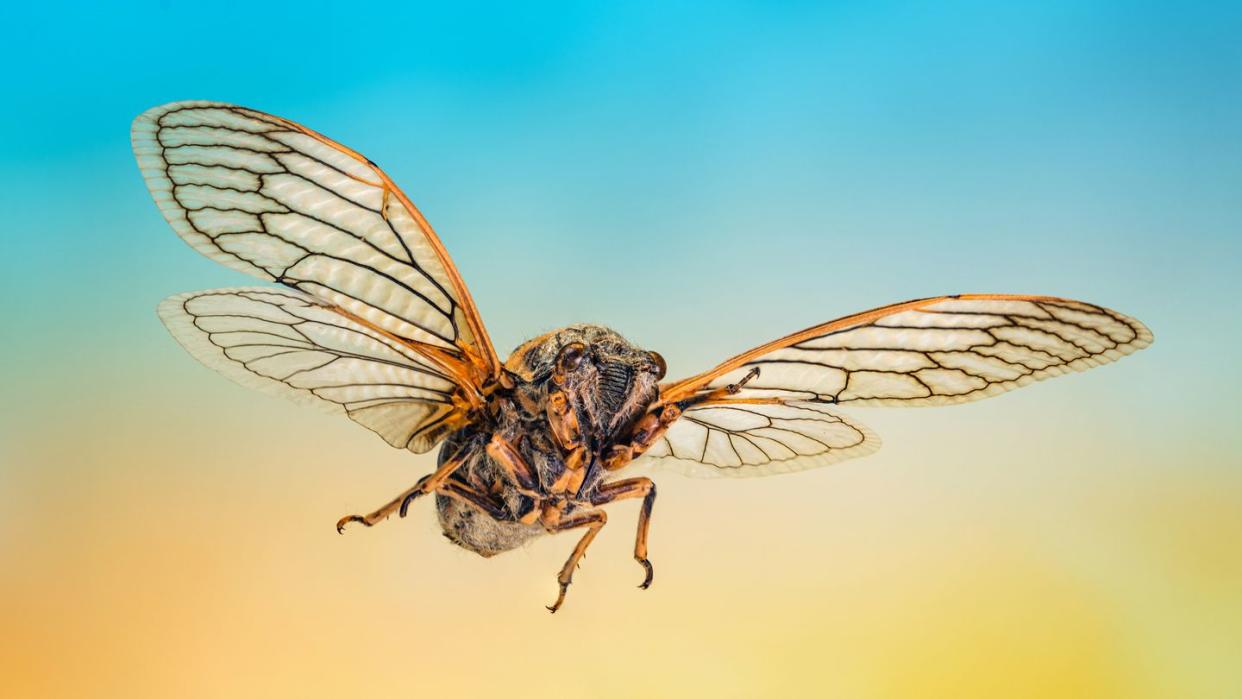Two Cicada Broods Are About to Emerge at the Same Time. They Haven’t Paired Up Since 1803.

Nearly every year, one of 15 cicada broods emerges in U.S. But in 2024, we’re getting two—Brood XIII and Brood XIX.
The last time two broods emerged at the same time was back in 2015, and the last time these two specific broods emerged together was way back in 1803.
The next time two broods emerge together will be in 2037 and the next time these two broods see each other? Well, that’ll be around 2445.
Periodical cicadas (Magicicada), native to the eastern and midwestern U.S., are some of the strangest insects in existence. True to their name these cicadas—unlike annual cicadas—spend nearly their entire lives as nymphs underground, only emerging periodically as adults to mate, lay eggs, and then die all within a few weeks.
To those not in the insect know, periodical cicadas seem like a constant presence. But that’s only because there are so many broods: 12 broods with 17-year cycles and 3 broods with 13-year cycles (along with 15 empty classes). So, almost every year, a brood emerges somewhere.
However, 2024 will be a particularly special year, as Brood XIII (Northern Illinois Brood) and Brood XIX (Great Southern Brood) will emerge at the same time. The last time these two cicada groups enjoyed the fresh air together was back in 1803. Brood XIII is a 17-year brood while Brood XIX returns every 13 years, and because of their close proximity, these cicadas will likely encounter each other once they emerge.
Their emergence will likely occur in May or June, as soil temperatures of about 64 degrees Fahrenheit are what usually kick off the closing act of these cicadas’ lives. But while these two broods haven’t seen each other since President Thomas Jefferson was dotting the i’s on the Louisiana Purchase, the emergence of two broods at the same time is more common.
According to the University of Connecticut, 2024 will be the first time in 9 years that a 13-year brood emerges with a 17-year brood, and it’s the first time in 16 years that adjacent broods will emerge. The next co-emergence of two broods won’t occur for another 13 years and these two particular broods won’t see one another again until the year 2445.
This particularly notable brood year has some labeling 2024 the “cicadapocalypse.” Thankfully, however, cicadas are not harmful to humans—though their endless droning that sometimes reaches as high as 90 decibels can certainly be annoying. Some enterprising people have even been known to make cicada ice cream to take advantage of the local brood season.
While eating cicadas (they have a nutty, shrimp-like flavor, if you were wondering) may not be in your future, the cicadas that do emerge during these seasons provide a bountiful buffet for predators. But interestingly, that’s also a part of the periodic cicadas’ strange evolutionary survival plan.
Simply put, when cicadas emerge, they do so in the millions. And while some will certainly be eaten—whether by birds or ice cream connoisseurs—many more will survive the experience and live long enough to deposit their eggs into small tree branches. Six to ten weeks later, the newly hatched cicadas fall from these branches and burrow into the ground, where they’ll live out their lives eating tree root sap until it’s finally time to rise again.
You Might Also Like


